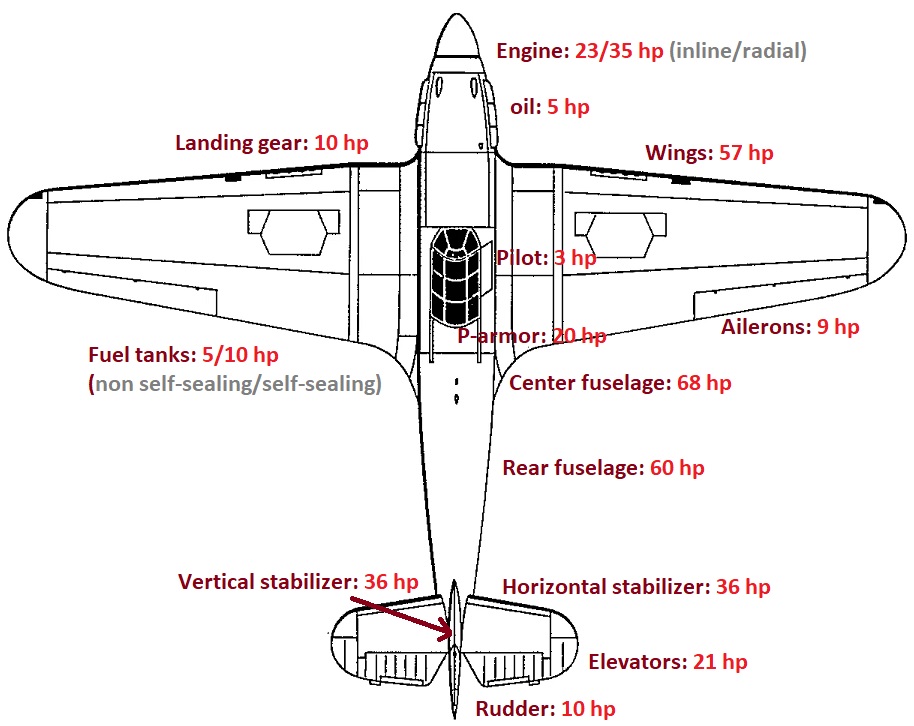Might be helpful to show how the hitpoint system looks like.
The hitmap is made up of many different parts, each plane now has the hitpoints of each part based on the material, known structural strength and size. The Zeros easily went kaboom in ww2 because the non self-sealing fuel tanks exploded if hit. A Zero wouldn't explode just because you hit it's tail or parts of the fuselage and wings where there is no fuel. In Warbirds a hit to the fuel tank only causes a fuel leak, no explosion. As such the Zeros in Warbirds don't go kaboom when the fuels are hit. The Zeros are however set to ~80% the hitpoints of other fighters, a bit as a compensation and the fact that they had a weaker structure than most planes, and they have less hitpoints for their fuel tanks, so are easy to fuel. Also note that hitpoints in Warbirds were set partly from a real life estimation, and partly for creating good gameplay, i.e. trying to find the line between to fragile vs to tough, for the dogfights to be fun while still historically accurate.
Below is the average amount of hitpoints for each part for the fighters in Warbirds. Do note that this varies for each fighter, but I've summed them all up and calculated the average numbers.

Now let's look at the guns. The most common damage output per bullet is:
.30 cal/7.9 mm: 1 dmg/round
.50 cal/12.7 mm: 2 dmg/round
20 mm cannon: 7-8 dmg/round
30 mm cannon: 36 dmg/round
The damage is transferable, so if you hit the elevator of the average fighter with a 30 mm shell (36 dmg), the vator is destroyed, and the horizontal stabilizer now has 21 hitpoints left. A second 30 mm hit to the vator or h-stab will fully destroy the h-stab, or you can finish it off with a short machine gun burst. A hit anywhere on the right wing will draw from the total hitpoint pool of the right wing, no matter if you hit the root, mid or tip of the wing.
We can see that in order to get a kill, you need to score several focused hits with a 20 mm cannon to fully demolish that vital part of the plane. A single hit would cause quite a hole in real life, but not a complete structural failure. The 30 mm cannon of the Bf 109K-4's will usually need 2 hits into a fresh vital part to make the plane go kaboom. However if you hit 1 bullet in the left wing, 1 bullet in the right wing, 1 bullet in the fuselage etc, the plane will be very fragile to subsequent fire, but these spread out 30 mm hits have not yet caused a major structural failure. The next time you shoot at someone, instead of being outraged and think: "Omg I hit him with two bursts and he is still flying!!"... Try to see where exactly your bullets are hitting and count the damage to that certain part of the plane, not the total bullets that have hit anywhere on the plane. Focus your next burst at the parts that have already been hit.
Now in the video the hits are clearly spread out. As such there was nothing suspect of the Zero surviving those spread out hits. The bullets weakened the parts hit and even caused a fuel leak and destroyed the rudder, but one would need a few bullets extra in the already damaged parts in order to cause a major structural failure.
I hope this clears things up a bit

/Robert